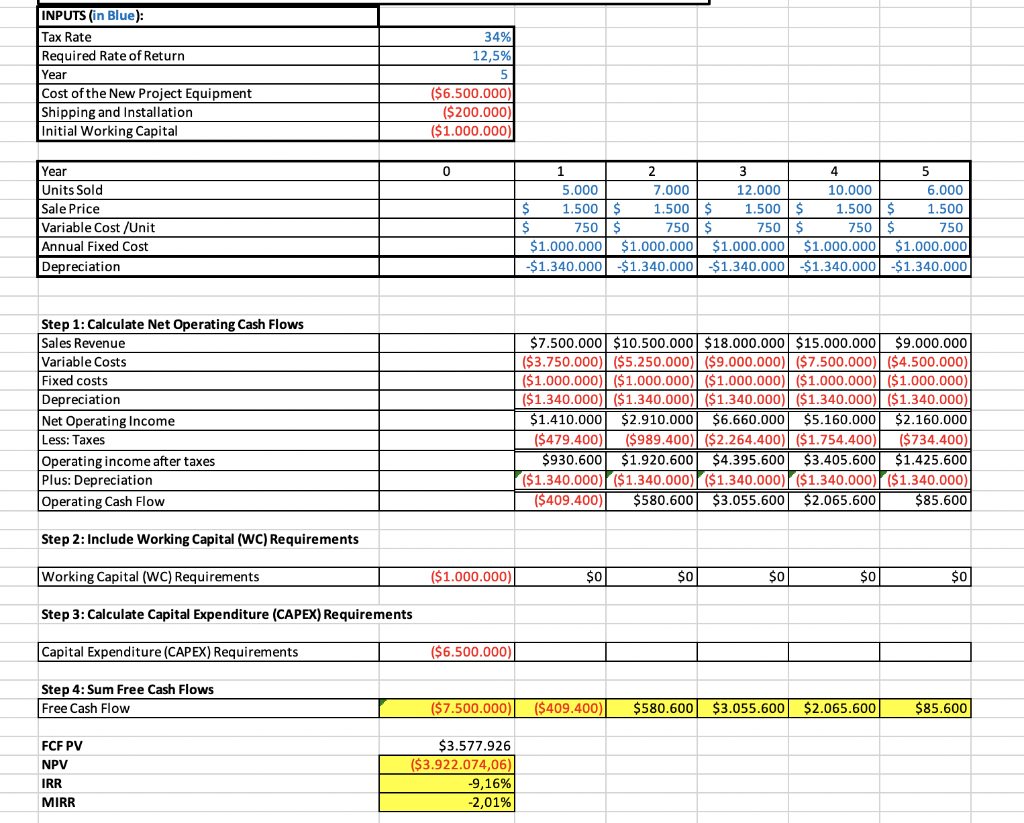Question
You are considering selling new elliptical trainers and you feel you can sell these 5 years (after which time this project is expected to shut
You are considering selling new elliptical trainers and you feel you can sell these 5 years (after which time this project is expected to shut down when it is learned that being fit is unhealthy). The number of units you think you can sell per year is given below. The elliptical trainers would sell for $1,500 each with variable costs of $750 for each one produced, while annual fixed costs associated with production would be $1,000,000. In addition, there would be a $6,500,000 initial expenditure associated with the purchase of new production equipment, and an additional $200,000 would be incurred for shipping and installation of the new equipment. It is assumed that this initial expenditure will be depreciated using the straight-line method. This project will also require a one time initial investment of $1,000,000 in net working capital associated with inventory, and it is assumed that this working capital investment will be recovered when the project is shut down. Finally, Assume the firm's tax rate is 34%.
Assuming a discount rate of 12.5%, calculate the projects NPV, IRR and MIRR, and determine if you should take on the project.
FIND THE 3 Problems in this FCF calculation.

Step by Step Solution
There are 3 Steps involved in it
Step: 1

Get Instant Access to Expert-Tailored Solutions
See step-by-step solutions with expert insights and AI powered tools for academic success
Step: 2

Step: 3

Ace Your Homework with AI
Get the answers you need in no time with our AI-driven, step-by-step assistance
Get Started


